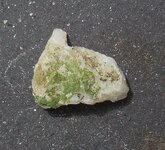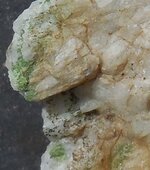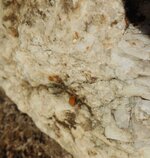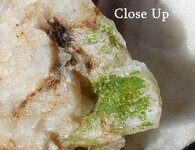Ashman
Full Member
- Apr 11, 2012
- 182
- 83
- Detector(s) used
- AT-Pro & F75-SE
- Primary Interest:
- All Treasure Hunting
I found what looked like some crystals along a wall where someone has dug at a long time ago. I even found what looks like a small orange citrine (I know it could be anything) attached to a piece of quartz from a recent looking rock slide. The quartz had more small looking pieces embedded into it as well.
I was wondering about the green looking areas on these rocks in these pics. Can mold grow inside quartz rocks? I wouldn't think so. I broke a small section open on this rock that you can see the orange stone and I spotted these green areas inside the rock.
Any thoughts or suggestions on these green areas ?




I was wondering about the green looking areas on these rocks in these pics. Can mold grow inside quartz rocks? I wouldn't think so. I broke a small section open on this rock that you can see the orange stone and I spotted these green areas inside the rock.
Any thoughts or suggestions on these green areas ?




Last edited:



